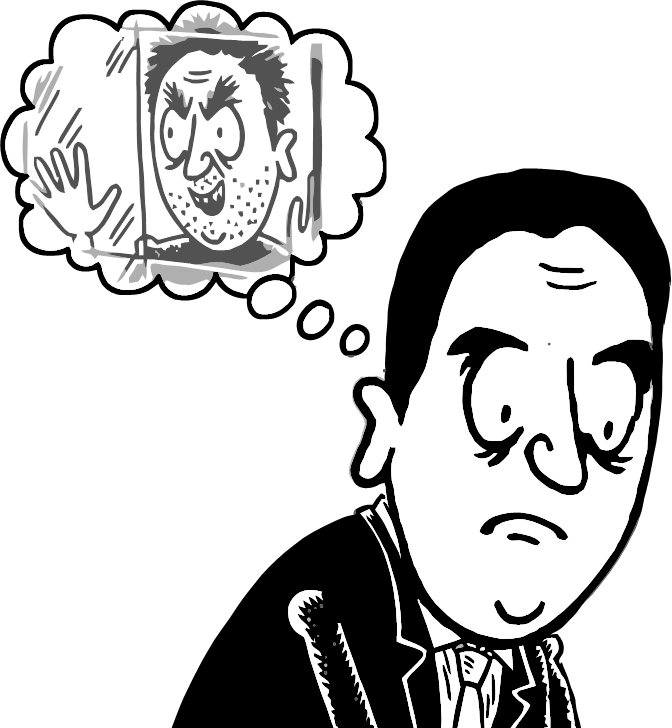Hildegard of Bingen (also known as Hildegarde von Bingen, l. 1098-1179) was a Christian mystic, Benedictine abbess, and polymath proficient in philosophy, musical composition, herbology, medieval literature, cosmology, medicine, biology, theology, and natural history. She refused to be defined by the patriarchal hierarchy of the Church and, although she abided by its strictures, pushed the established boundaries for women.
Along with her impressive body of work and ethereal musical compositions, Hildegard is best known for her spiritual concept of Viriditas – “greenness” - the cosmic life force infusing the natural world. For Hildegard, the Divine manifested itself and was apparent in nature. Nature itself was not the Divine but the natural world gave proof of, existed because of, and glorified God. She is also known for her writings on the concept of Sapientia – Divine Wisdom – specifically immanent Feminine Divine Wisdom which draws close to and nurtures the human soul.
From a young age, she experienced ecstatic visions of light and sound, which she interpreted as messages from God. These visions were authenticated by ecclesiastical authorities, who encouraged her to write her experiences down. She would become famous in her own lifetime for her visions, wisdom, writings, and musical compositions, and her counsel was sought by nobility throughout Europe.
Early Life & Education
Hildegard came from an upper-class German family, the youngest of ten children. She was often ill as a child, afflicted with headaches which accompanied her visions, from around the age of three. Whether her parents consulted physicians about her health issues is unknown, but at the age of seven, they sent her to be enrolled as a novice in the convent of Disibodenberg.
Hildegard was placed under the care of Abbess Jutta von Sponheim (l. 1091-1136), head of the order, an aristocrat and daughter of a count who had chosen the monastic life for herself. Jutta was only six years older than Hildegard in 1105 when the latter entered the convent and the two would become close friends. Jutta taught Hildegard to read and write, how to recite the prayers, and introduced her to music by teaching her to play the psaltery (a stringed instrument like a zither). Jutta may also have instructed the younger girl in Latin (though this claim has been challenged) and encouraged her to read widely.
Hildegard certainly fit this paradigm of the female intellectual, distinguishing herself by her vast learning, devotion to God, and service to others. When Jutta died in 1136, Hildegard, then 38 years old, was unanimously chosen to succeed her.
Works & Beliefs
Hildegard's vision is all-encompassing in scope, far transcending the common vision of the medieval Church while still remaining within the bounds of orthodoxy. She claimed the Divine was as female in spirit as male and that both these elements were essential for wholeness. Her concept of Viriditas elevated the natural world from the Church's view of a fallen realm of Satan to an expression and extension of the Divine. God was revealed in nature, and the grass, flowers, trees, and animals bore witness to the Divine simply by their existence.
Her first major work, the Scivias, relates 26 of her visions in three sections – six visions in the first, seven in the second, thirteen in the third – along with her interpretation and commentary on the nature of the Divine and the role of the Church as an intermediary between God and humanity. She depicts God as a cosmic egg, both male and female, pulsing with love; the male aspect of the Divine is transcendent while the female is immanent. It is this immanence which invites rapport with the Divine.
Hildegard believed that, prior to the Fall of Man, God was worshipped by celestial song which, after the Fall, was approximated by music as humans now heard and understood it. Music, then, was the best expression of one's love for, devotion to, and worship of God. In keeping with this belief, she ends the Scivias with the text of her morality play Ordo Virtutum and her Symphony of Heaven, one of her earliest musical compositions.
Conclusion
Aside from her contributions to theology, philosophy, music, medicine, and the rest, Hildegard invented the constructed script of the Litterae ignotae (alternate alphabet), which she used in her hymns for concise rhyming and, possibly, to lend to her text a sense of another dimension and higher plane. She also invented the Lingua ignota (unknown language), her own philological construct of 23 letters which served to separate and elevate her order from the mundane world.
In spite of her accomplishments and fame, the Church continued to regard women not only as second-class citizens but dangerous temptations and obstacles to virtue. The highly influential Bernard of Clairvaux claimed that a man could not associate with a woman without desiring sex with her and the canonical order of the Premonstratensians banned women from their order claiming to have recognized "that the wickedness of women is greater than all the other wickedness in the world" (Gies, 87). It was precisely this kind of misogynistic mindset that Hildegard struggled against not only within the Church but in medieval society at large.
Even so, the significance of her work was recognized by the Church and she was singled out as a woman of note. Her cause of death is unknown but she died, most likely of natural causes, in 1179. Attempts to canonize her stalled until 2012 when she was recognized as a saint through the process of Equivalent Canonization and was proclaimed a Doctor of the Church by Pope Benedict XVI. Her famous visions are today interpreted as symptoms of a migraine sufferer but this has in no way detracted from her reputation.
Megathreads and spaces to hang out:
- 📀 Come listen to music and Watch movies with your fellow Hexbears nerd, in Cy.tube
- 🔥 Read and talk about a current topics in the News Megathread
- ⚔ Come talk in the New Weekly PoC thread
- ✨ Talk with fellow Trans comrades in the New Weekly Trans thread
- 👊 Share your gains and goals with your comrades in the New Weekly Improvement thread
reminders:
- 💚 You nerds can join specific comms to see posts about all sorts of topics
- 💙 Hexbear’s algorithm prioritizes comments over upbears
- 💜 Sorting by new you nerd
- 🌈 If you ever want to make your own megathread, you can reserve a spot here nerd
- 🐶 Join the unofficial Hexbear-adjacent Mastodon instance toots.matapacos.dog
Links To Resources (Aid and Theory):
Aid:
Theory:


I should learn how to solder and brush up on my woodworking skills and become a luthier and open a custom shop and do setups and mods for people as a side hustle. (No, this isn't a coke head "let's start a restaurant" thought, but I am sleep deprived and extremely caffeinated)
Guitar gear nerd shit
Fishman should make a Fluence version of Seymour Duncan P-Rails where the single coil and p90 are printed to have the single coil hotter to match the p90 output so the combined humbucker mode isn't all uneven and muddy.Fluence design clarity in a hot swiss army knife pickup like the P-Rails design would be so sick, wire it up with coil tap and an out of phase option and it'd be like the ultimate versatile pickup option.
Put that bad boy in a neck through design guitar with 24 frets, locking trem and locking tuners, a killswitch, a D-tuner on the low E, and put a Whammy Ricochet on your pedal board for lowering the tuning when you need to and you'd pretty much have a set up that can play anything that's in any regular interval or drop tuning.
Love me some P-90s. I have Harmonic Design Z90s in my primary guitar.
All my guitars have humbuckers
It's G.A.S. time, baby!
I really want a Fender Cyclone II but they're hard to find now. It's basically the weird stepchild of a Strat and a Jaguar with a Mustang's body and a Gibson 24¾" scale. They reissued the design as a Squire recently but the Fender original had Jaguar pickups and the reissue just has Strat pickups
A Mustang with P90s would be sick too
You could find parts and build one up
I use one of these guys. It's set up with the humbucker size P90s and tape wound strings. I don't have callouses anymore because the tapes are so easy on my fingers.
You should ask for a refund, they forgot the headstock! 😂🤣
🎸
Pretty finishI just got it pre-broken because I'm clumsy and wanted to cut out the middle man.
All my guitars have humbuckers
Luthier is one of the very pretty words
The money might be in guitar setups. I convinced my bandmate to pay for my setup bc I always do my own setups and I wasnt hearing anything wrong with it. Turns out it was fine, $120 for nothing.
All the specialty tools for fret jobs would be kinda pricey up front but it could be worth it if I ended up getting regular repeat customers idk
I kinda like tinkering with that kind of thing but having a gigging musician with really specific setup needs coming in before a gig or going out on tour that needs something worked on with a hard turnaround time would probably stress me out, the idea of screwing something up or someone not knowing what they really wanted and telling people I don't know what I'm doing makes me and I haven't even done anything yet
and I haven't even done anything yet
Invest in some good metric and imperial rules (or whatever the grown up word they use for more accurate ones) and practice on cheap instruments